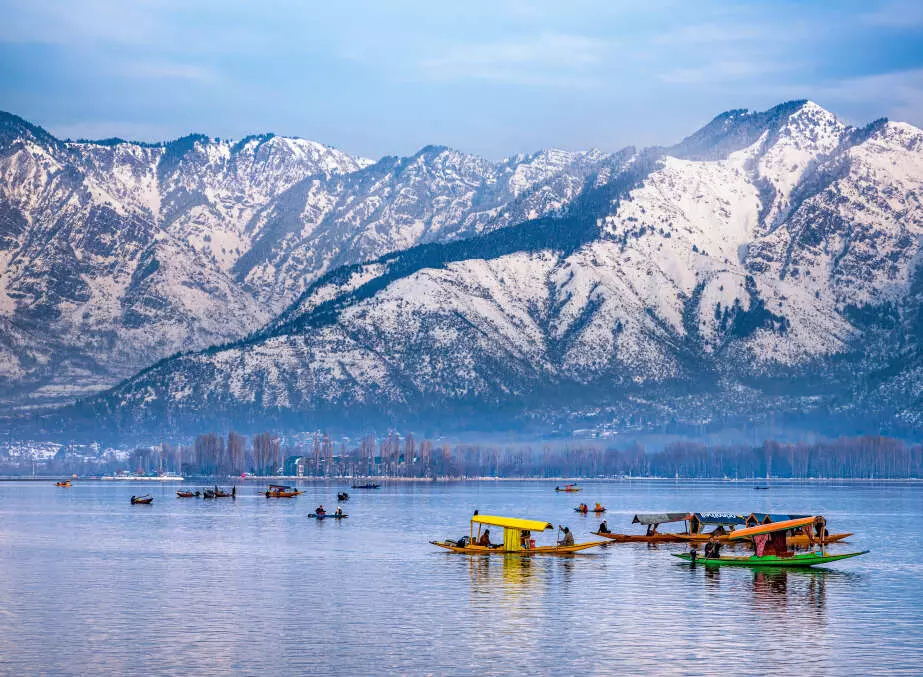From the Edge of Caution
With the northern borders burning, travellers should abstain from visiting risky areas in order to ease the strain on security personnel and ensure their own safety

There’s something magnetic about the northern frontiers of India—the soaring Himalayan peaks, the poetic silence of snow-blanketed towns, and the raw, unfiltered stories the land seems to whisper. For years, I’ve traced my footprints across border districts—Kupwara, Poonch, Turtuk, Kargil—seeking not just landscape but lived memory. I’ve shared kehwa with strangers in Gurez, heard folk songs in Uri, and gazed at barbed wires vanishing into mist. But this time, I didn’t go.
This time, I paused.
The Pahalgam terror attack shook something deeper than my sense of national mourning—it rattled my instinctive confidence in spontaneous travel. As I sat with my backpack half-packed on May 7, news flashed of India’s precision strikes under ‘Operation Sindoor’. Nine terrorist targets across Pakistan and Pakistan-occupied Kashmir were hit in retaliation. My phone buzzed with advisories. Friends called to ask if I was still heading north. I wasn’t. I couldn’t. And maybe, I shouldn’t. We travel to escape—but also to connect. Yet sometimes, the road demands more than just enthusiasm; it asks for responsibility.
The Border Isn’t a Tourist Trail
In recent years, regions close to the India-Pakistan Line of Control have seen a gentle uptick in tourism. From the dramatic beauty of the Tithwal bridge to the curiosity of village life in Tangdhar, many intrepid travellers have ventured where only army convoys once rolled. While these areas can seem peaceful on the surface, the reality is brittle. One bullet, one infiltration, one misstep—and the landscape morphs into a macabre theatre.
Post Operation Sindoor, tensions are understandably high. Locals live with an invisible anxiety, heightened by military movement and a steady flow of surveillance chatter. The armed forces remain on alert. And so, I changed my route. I abandoned my plan to reach Teetwal and cross the pedestrian bridge that leads into Pakistani territory across the Neelum. I didn’t board the shared cab from Baramulla that would’ve dropped me at Karnah. Instead, I redirected my journey south. Sometimes, retreat is not fear. It’s respect—for the land, for its people, and for the soldiers who guard it.
Safety as a State of Mind
Vigilance isn’t a buzzword—it’s a way of traveling in 2025. We live in a time when conflict isn’t always declared through air raids; it often erupts without warning, in places that appear deceptively quiet. Terror has no uniforms or fixed coordinates. So how do we move through our country—proudly, but cautiously? For one, steer clear of areas within 20-30 km of international borders in the northwestern and northern belts. This includes districts like Rajouri, Poonch, and certain belts in Kupwara and Baramulla. The risks are not just about militancy but also about disruptions—road blocks, sudden security lockdowns, mobile network suspensions, and curfews that can leave you stranded with no Plan B. Avoid group selfies near sensitive installations, military checkpoints, or bridges. Refrain from drone usage or geotagging strategic sites. Most importantly, don’t travel on emotion. Travel on information. Check local news. Call ahead. Speak to local homestay operators. Ask questions like: “How is the situation this week?” and “Is the Army allowing tourists here?” It might feel uncomfortable—but it could save your life.
Conversations that Change You
One of the most poignant moments on my diverted journey happened not on a mountaintop, but on a train platform in Pathankot. An off-duty soldier, sipping tea next to me, noticed the camera slung across my shoulder. “Photographer?” he asked. “Sort of. Traveler,” I replied. He looked away briefly and then added, “People come to these places looking for stories. They forget we’re still living them.” It struck me—our borders aren’t Instagram backdrops. They’re living scars stitched together by silence and sacrifice. The soil holds secrets too sacred for flash photography. We parted ways without exchanging names. But I walked away with something heavier than my backpack—perspective.
The New Spirit of Travel
In a country as emotionally and geopolitically complex as India, the idea of travel has to evolve. It’s no longer just about bucket lists or breaking away. It’s about awareness, empathy, and timing. There will be a day when Uri will host music festivals, and Kupwara will be known for something other than ceasefires. But until then, our journeys must tread with humility. Let not your passport to adventure become someone else’s search and rescue operation. Travel, yes. But travel with your eyes wide open and your ear to the ground. Because in times like these, staying alive is the ultimate destination.
The Roads Less Tense: Alternate Routes and Destinations
You don’t have to sacrifice beauty for safety. India is vast. If your heart still longs for hills and heritage, here’s where you can go instead:
- Tirthan Valley, Himachal Pradesh
Far from the conflict zone, this quiet valley near the Great Himalayan National Park is untouched, tranquil, and dotted with wooden homes and pine canopies. The Tirthan River gushes crystal-clear, and trout fishing is almost meditative here. - Munsyari, Uttarakhand
Facing the Panchachuli peaks, this is a dreamland for trekkers. Unlike more popular spots like Mussoorie or Nainital, Munsyari remains unspoiled. - Meghalaya’s Sacred Groves
If you’re looking for escape in the east, the Khasi hills offer rain-washed serenity. Mawphlang’s sacred groves, living root bridges in Nongriat, and clean villages like Mawlynnong are testimony to how nature and culture can coexist in harmony. - Sundarbans, West Bengal
Trade the mountains for mangroves. As you navigate through narrow creeks with only the hum of the engine and chirping of birds, the world’s tension feels far away. But do check for tide charts and cyclone alerts. - Coorg and Agumbe, Karnataka
Down south, the Western Ghats offer their own versions of mystique. From coffee estates in Coorg to the rainforests of Agumbe—nicknamed the Cherrapunji of the South—there’s plenty to discover without stepping near troubled borders.
The writer is a freelance travel journalist.



